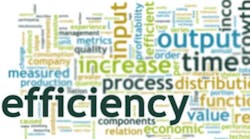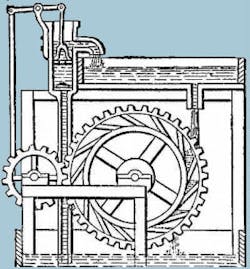It’s always a good idea to design for efficiency whenever you can. But efficiency can be a hard sell unless the buyer or management sees higher efficiency as a smart investment.
I visited a Baldor Electric, Fort Smith, Ark., a manufacturer of electric motors, drives, and, controls, and learned about substantial reductions in electricity costs that can be had simply by specifying higher efficiency motors. The presentation was geared toward general-purpose motors in the manufacturing plant, but energy savings could also become a selling point if you specify electric motors for hydraulic power units.
John McFarland, president and CEO of Baldor, pointed out that more than 97% of the money spent on a motor goes toward the electricity to run it. More specifically, the average 3-phase, 50-hp, 1800-rpm motor will consume $36,029 worth of electricity if operated continuously over the course of a year. This assumes a very modest $0.10/kW-hr rate for electricity and motor efficiency of 90.7%. However, a premium efficiency (94.5%) motor operating under the same conditions would consume $34,580 worth of electricity. McFarland noted that the $1449 savings in the first year alone would almost pay for the entire motor -- not just the difference in price. Now multiply this saving by an expected life of ten years (which seems rather conservative), and the cost of a $2000 motor compares to a total cost of $360,000.
Granted, most motors aren’t 50 hp and don’t operate fully loaded 24/7. However, for most industrial hydraulic systems, the power unit’s electric motor is running whenever the machine is on. And in many cases, the motor runs fully loaded most of the time. So if the power unit is running 16 hr/day, six days a week, the savings can still be substantial.
Literature provided by Baldor lists figures for motors sized from 1 to 200 hp, so let’s look at a situation more typical of an industrial hydraulic system. According to Baldor, a standard 10-hp motor has an efficiency of 86.1%, which would use $7591 worth of electricity annually if operated continuously. But 4800 hr/yr seems more reasonable for a typical power unit. This amounts to 16 hours per day, six days a week, with two weeks off, which translates to $4159/yr. Baldor publishes their 10-hp premium motor as having an efficiency of 91.7%, which would consume $7127 of electricity annually. Again, though, at 4800 hr/yr, this would translate to $3905 -- an annual savings of $254.
But if the motor runs only about 55% of the time, then we should upgrade its expected life proportionally -- to 18.25 years. So for our example, the total energy cost savings from specifying a premium efficiency motor would amount to $4635. And don’t forget, these figures are based on electricity at $0.10/kW-hr. Ten cents is too low for situations, and rates will likely increase even more over time.
After the formal presentation, someone remarked that many designers are well aware of the benefits of specifying more energy-efficient components. The problem is that sometimes the people who won’t approve spending a little more for higher energy efficiency are the same ones who threaten to cut jobs if expenses (such as the electricity bill) are not reduced. Therefore, because you have read this far, it now has become your task to share this information with whoever has been complaining about your facility’s electricity bill.

Continue Reading
Continue Reading
BOOK 2, CHAPTER 12: Fluid Motor Circuits
March 18, 2009
Motor leakage variations
Oct. 18, 2006
Sponsored Recommendations
Sponsored Recommendations
All-In-One DC-UPS Power Solutions
March 13, 2024
Motor Disconnect Switches
March 13, 2024
Industrial Straight-Through Cable Gland
March 13, 2024

